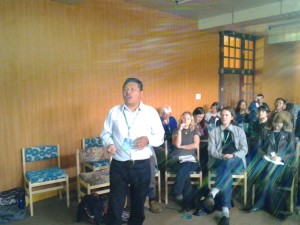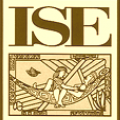Contributed by Alí García Segura, Bribri, University of Costa Rica

This year from June 1-7 in Bhutan a successful event was held and I’d like to share my experience with you. Bhutan is a country nested in the mountains between India, China and Nepal.
The 14th Congress of the International Society of Ethnobiology was held in Bumthang, Bhutan. More information can be found at the site of the hosting institute or at the ISE site. This amazing congress was organized by the ISE and the Ministry of Agriculture of Bhutan.
In my opinion the ISE was wise in choosing this country to host this important event, which was attended by presenters from all over the world, all speaking about a common theme—the appropriate use of natural resources, which we still rely on in our countries. The Congress opened on Sunday, June 1st at 2:30pm with the royalty and Ministers of Bhutan in attendance, as well as artistic presentations of Bhutan’s dance and culture. Although the country is mainly a mountainous one, whose streets therefore would seem to present constant danger, paradoxically during my stay I didn’t see a single accident. People are very educated in every sense of the word. I was very impressed by the care people took with their natural resources, rivers and mountains. Not to mention the care they took with visitors, the expression of kindness that emanated from their faces and the beauty of their cultural dress.
The congress took place in a comfortable facility at UWICE, in Bumthang, surrounded by pine forests, about 15 minutes in small buses from the city centre. ISE members and congress organizers ensured that all the participants were able to get the most out of the congress, and all the country had to offer. All this without losing sight of what goal of the congress, and that’s how it went! As an Indigenous participant from the other side of the world, I managed to share not only with the presenters from other regions, but also with the local people. Which I think shows that the organizers understood very well the need to overlap traditional local knowledge with current science to bring together two worlds for a single purpose.
ISE scheduled various activities during the week—some presented their research, others presented project results, or made poster presentations on new methods of agriculture among other things. There were also indigenous people who presented dances and their traditional arts; while for me, I gave a conference on the worldview of the Bribri of Costa Rica.
For us Indigenous people this congress represented a basket full of opportunities to learn and share our way of seeing and explaining the world that we and our ancestors dream of having. I think we must find a way to have a larger presence and more members from our lands. More than 57 countries were represented at the congress, but I don’t remember seeing anyone else from Central America, except from Costa Rica. I was really flattered to represent our region, I will always be grateful to do so, but I think that it would be greatly beneficial to involve other Indigenous people from the region.
I urge my colleagues, both from Costa Rica and other countries, to learn more about the ISE and find opportunities to contribute to this organization so it can grow even more. I am convinced that through the ISE, the world will hear the voice of Indigenous people, which in other instances has been silent.
As a member of the ancient Bribri people of Costa Rica, we wish to thank all ISE members for undertaking this huge task which has, without a doubt, strengthened the Indigenous worldview
We should not think about what we need to do to leave a better world for our children, but rather how to educate our children to leave better children for our world!
Keep in touch.
Translated from Spanish by Elizabeth Thompson, original available here
